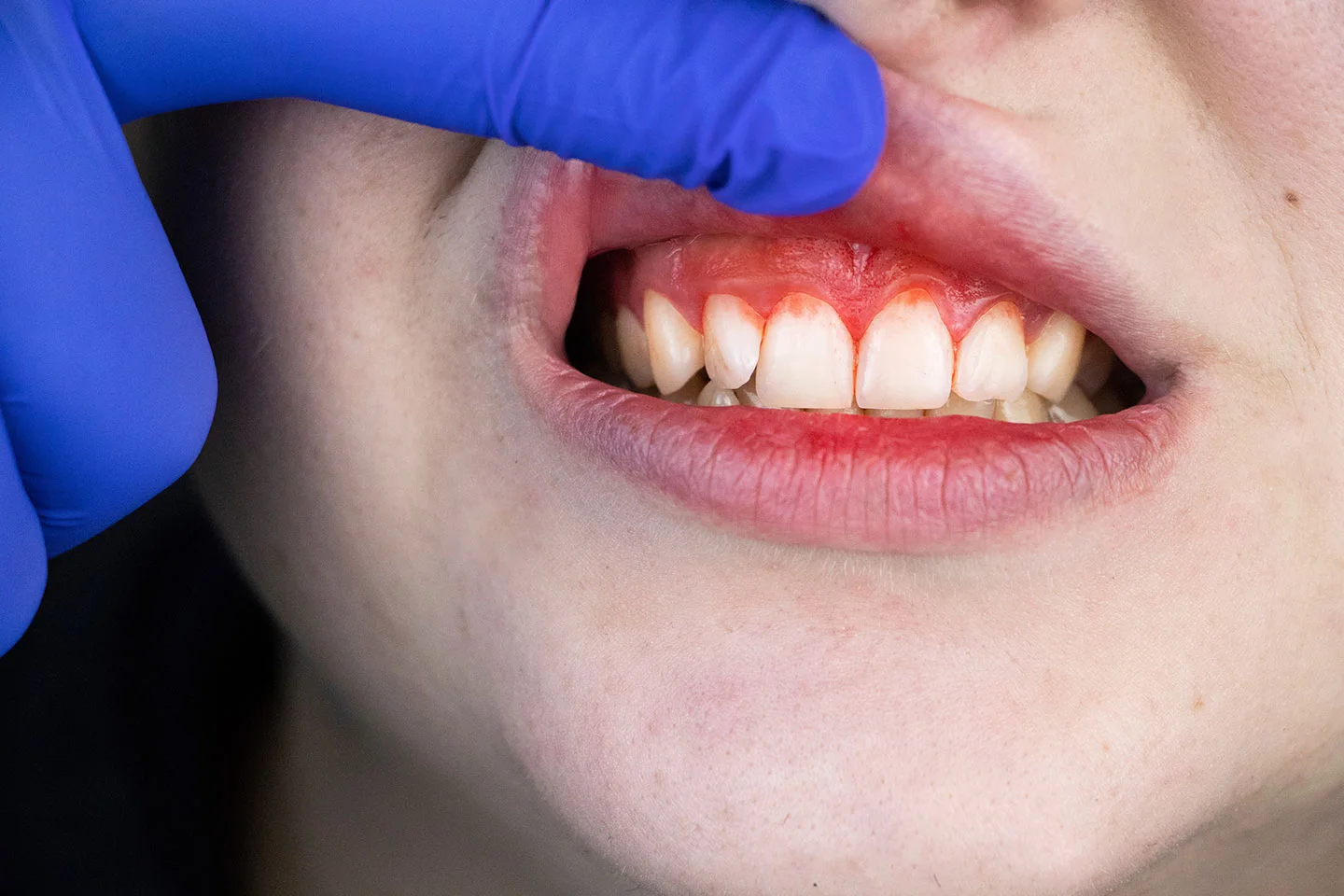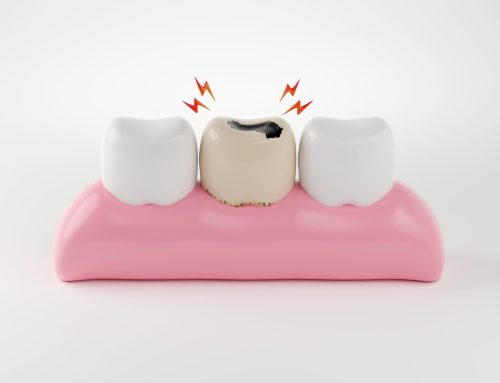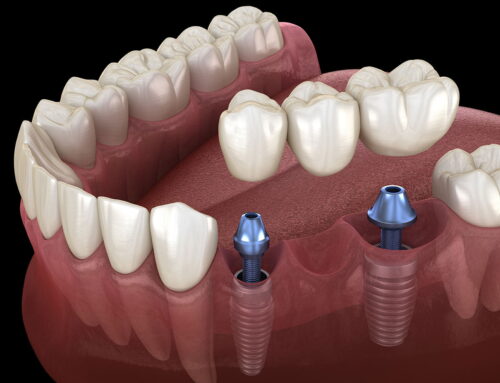70% of Canadians will develop gum disease at some point throughout their life. This can vary from mild gingivitis to severe periodontal disease that can cause your teeth to become loose and fall out. The progression can happen slowly and without serious symptoms until it becomes harder to manage without your dentist’s intervention. Your oral health plays an essential part in your overall health. If gum disease is left untreated and progresses from gingivitis to periodontal disease, you have a higher risk of developing diabetes or heart issues.
The good news is gum disease is preventable, reversible, and has several treatment options depending on the type and stage. Read on to learn more about the types of gum disease, their symptoms, and treatment methods.
Types of Gum Disease
There are two main types of gum disease – gingivitis and periodontitis. Beyond that, there are several types of periodontal disease. You often don’t notice any symptoms early on, and it isn’t always caused by forgetting to brush your teeth. That’s why it’s important to update your dentist on any changes in your oral health and get an exam every year so you can stop gum disease before it progresses too far.
Gingivitis
Gingivitis is the early stage of gum disease that is the easiest to reverse with meticulous attention to your dental hygiene routine. You’ll want to focus on this to prevent it from getting worse.
- Brush twice and floss once every day.
- Rinse with a mouthwash that will fight gingivitis. Your dentist will have great recommendations for this.
- Follow up with professional cleanings to remove the buildup of plaque and tartar.
Your dentist may even recommend antibiotics to help fight the bacteria in your mouth or a special toothpaste until things are back to normal. Getting treatment early is the key to preventing damage to your gums and progressing to periodontal disease.
Periodontal Disease
Periodontitis is the advanced stage of gum disease that can lead to further decay in the tissue, bones, and teeth. While gingivitis has a plaque build-up, periodontitis occurs when that plaque spreads below the gum line, which causes further damage.
When you reach this stage, your gums may begin to pull away from the teeth, or your teeth could possibly fall out. Various factors, such as poor hygiene, genetics, and underlying health problems, can cause this.
You’ll need to see your dentist to remove the tartar and get their advice on bettering your oral health. Your toothbrush alone can’t do the job!
Types of Periodontal Disease
Periodontal disease can start as something small and easy to ignore, quickly progressing if you have any other health conditions. Depending on the severity and symptoms, there are several categories of periodontal disease that you can fall under.
Chronic Periodontitis
If your teeth seem like they’re growing, this may be a sign of chronic periodontitis. It’s not your teeth getting longer, but the gums receding are causing this illusion. Unlike gingivitis, you can’t reverse it because the tissue has been damaged beyond repair.
However, you can stop the disease from getting worse with treatment options from your dentist. This could include scaling, root planing, pocket reduction surgery, or tissue grafts.
Aggressive Periodontal Disease
Aggressive periodontal disease is similar to chronic periodontitis. However, as you’ve likely guessed, it’s more aggressive. This means that the loss of gum and bone tissue happens more rapidly.
This is more common in patients with a family history of gum disease or smokers. The treatment options are the same as those suffering from chronic periodontitis; however, it’s more likely that surgery will be needed to help halt the progression of the disease.
Necrotizing Periodontal Disease
Necrotizing periodontal disease can affect patients who suffer from several other medical conditions, such as:
- Immunosuppression
- HIV
- Chronic stress
- Malnutrition
This can also affect smokers. This rare type of periodontal disease is diagnosed when the gum tissue, periodontal ligaments, and bones have lesions that can lead to bleeding, severe pain, or rapid tooth loss.
Due to the severity, your dentist will consult with your doctor for the best treatment plan, which may be similar to the steps for chronic periodontitis.
Periodontal Disease Related to Systemic Conditions
Gum disease is more likely to occur in adults, but in some cases, it can be present in children and teens. When this happens, your dentist will likely recommend a visit to the doctor as it can be related to heart disease, diabetes, leukemia, genetic disorders, or respiratory issues.
Even if plaque isn’t a major issue, these medical conditions can make it more likely to develop gum disease and accelerate its progression. You’ll need to focus on treating the medical condition in order for dental treatments to be of any benefit.
Have you noticed any changes in your bite, the colour or sensitivity of your gums, or any blood while brushing your teeth? It may be time to come in for a visit. Our friendly dental team can help get rid of the build-up of plaque and help treat your symptoms to prevent the progression of advanced periodontal disease. Contact us to book your appointment.
Have you ever had to navigate the symptoms of gum disease? What did you have to do to stop the progression? Share your experience with our readers in the comments below so they know what to expect.






Leave A Comment